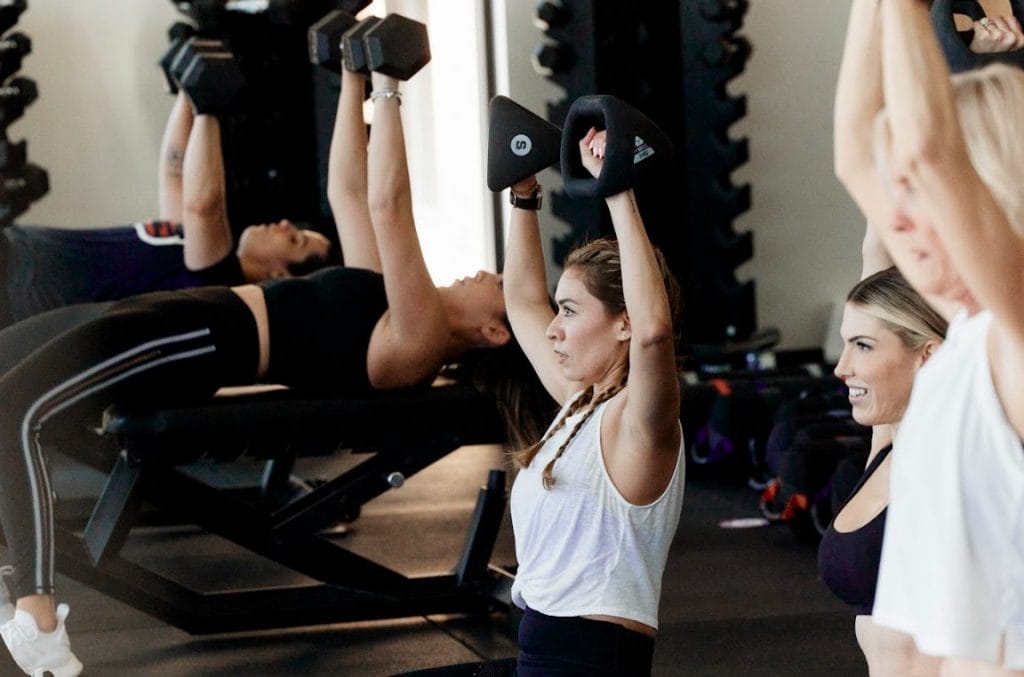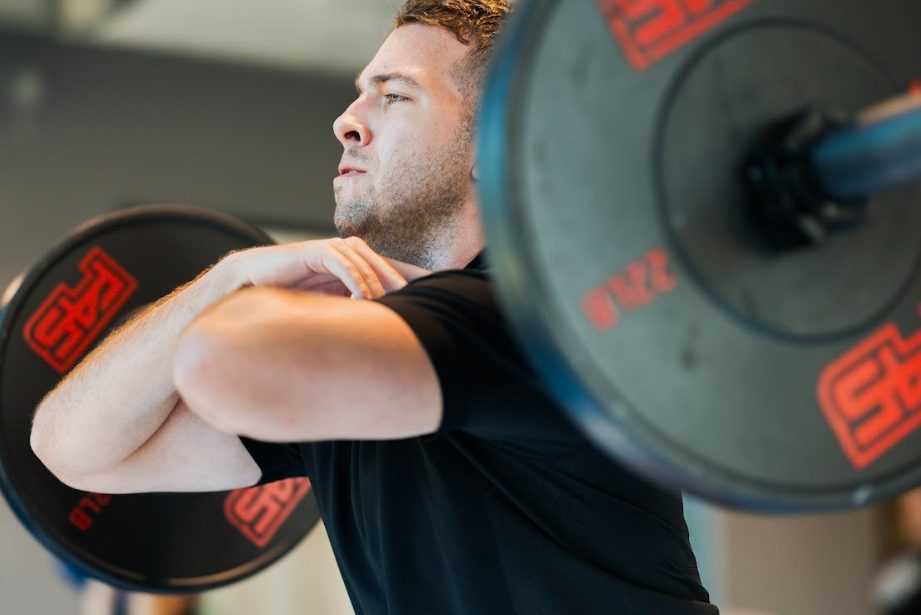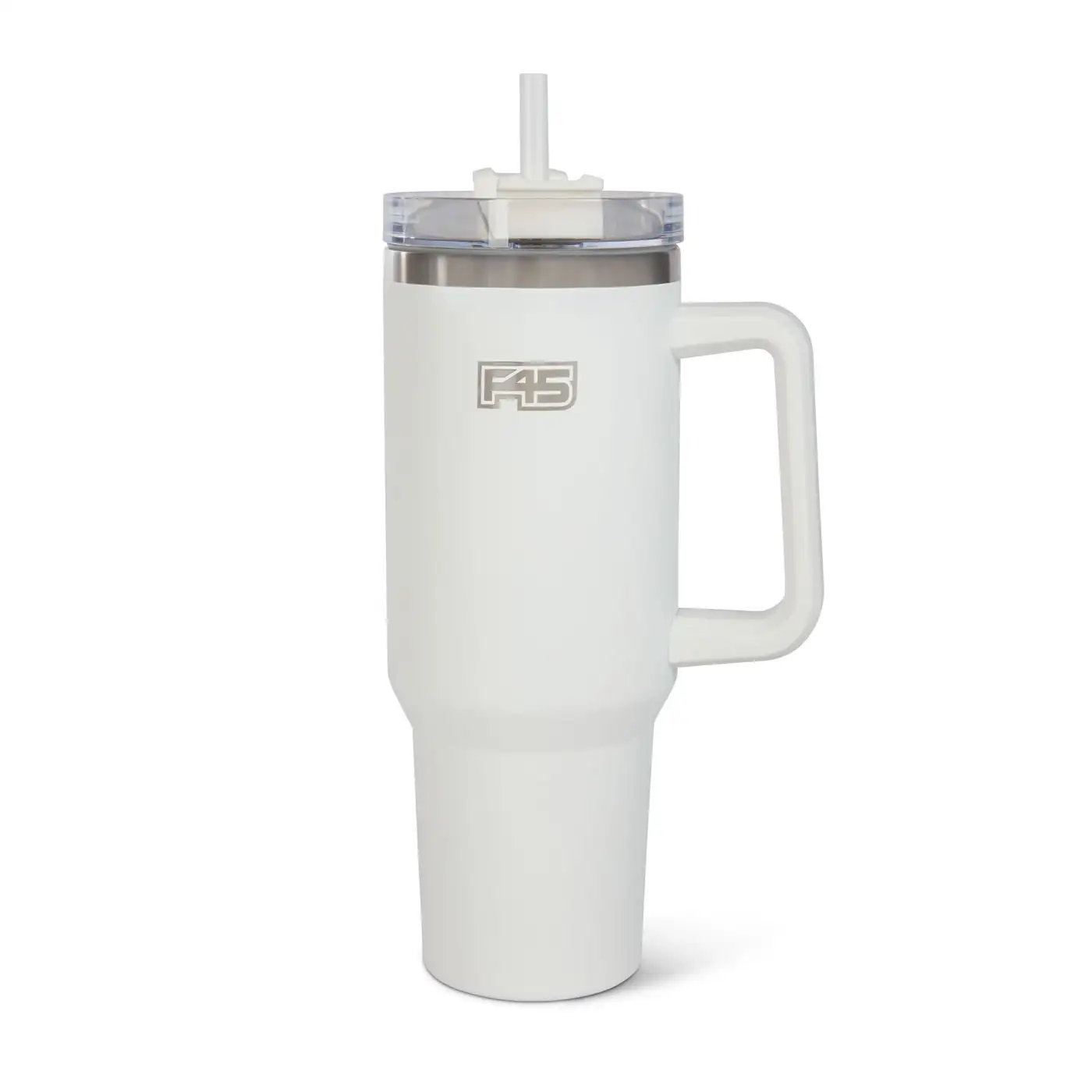When you experience perimenopause and menopause, it’s natural for the body to undergo various physical and mental changes. This can include muscle loss, fat gain, changes in body shape and composition, mood irregularity, increased stress, and joint and muscle aches¹. However, adhering to a regular menopause exercise plan can produce significant benefits – and may help reduce some perimenopausal and menopausal symptoms.
Perimenopause, the transitional phase before menopause, commonly happens between ages 45 and 55 (but can occur before this²), and may last anywhere between two and eight years³. True menopause happens 12 months after a woman’s final menstrual period².
In this guide, the F45 experts shed some light on the topic of exercise during perimenopause and menopause. Read on as we break down a range of our top F45 workout tips to bolster your physical and mental health during this transitional period and beyond.
Why you should exercise during menopause
Exercise during menopause improves your functional strength, boosts your wellbeing, and reduces your risk of cardiovascular disease. Through regular exercise, you can also mitigate the loss of bone density that occurs during the leadup to and after menopause – making you less likely to develop arthritis and osteoporosis. What’s more, increasing your muscle strength and mass makes you less susceptible to falls as you get older, further protecting your bones.
Avoid high-impact, high intensity exercises during menopause4. If your bone density is lowered, we recommend moderate strength training exercises workouts – they’re gentle on, yet still beneficial for, your body.
The benefits of exercise for perimenopause and menopause
There are many ways that a consistent, varied menopause exercise plan can benefit perimenopausal and menopausal women. Read on to explore the specific ways exercise can support you during perimenopause and menopause.
Boosts strength:
By improving your strength and muscle mass, you’ll help reduce the joint and muscle aches that can occur during perimenopause and menopause. Better still, resistance workouts improve your functional ability, making daily activities and chores easier to perform.
Burns fat
Because of the connection between hormones and weight loss, changes during perimenopause make abdominal weight gain common. A healthy perimenopause diet and exercise will help you limit the amount of weight you put on during this transition, as well as elevate your body composition.
Improves balance
Exercise helps to maintain your balance, which you can lose naturally as you age. This is why some of the best exercises for menopause are leg and core exercises – because it’s these muscles that support you in case of dizzy spells.
Lowers anxiety
Moderate cardio, strength or hybrid workouts help to reduce nervousness, stress, and restlessness during perimenopause and menopause. Exercise releases hormones that you make you feel good and take your mind off worries.
Supports sleep
There’s a fundamental relationship between sleep quality, exercise and health in that exercise supports sleep – and sleep supports exercise. So, consistent exercise during menopause helps to reduce sleeplessness during menopause5 – which is often caused by hot flushes – and help you get a good night’s rest.
How to create a menopause workout plan
Your perimenopause or menopause exercise plan should include a combination of cardio, strength training, and recovery. However, we recommend that you seek the advice of a qualified trainer to modify your menopause workout plan to ensure it aligns with your abilities and is suitable for your current strength and fitness levels. To help you build a sustainable fitness routine, we’ve included the best exercise for menopause and perimenopause below to get you started.
Strength training
There are extensive strength training benefits to support your health, but this is especially true for women experiencing perimenopause and menopause.
A menopause workout plan is designed to help you build muscle mass to improve your physical and mental health and strengthen your joints, slowing your loss of bone density and the onset of osteoporosis6. F45 workouts will give you a solid base of functional strength and power, while also burning calories.
Cardio exercises
Performing cardio exercises for perimenopause and menopause is an empowering way to slow weight gain and manage your fitness.
F45 cardio classes involve plyometric movements at various tempos to give you a full-body, fat-burning workout that targets your aerobic and anaerobic systems. Our classes are high-energy to help you build stamina and endurance, giving you the foundational tools to curate your menopause exercise plan with the support of qualified instructors.
Before you book in, be sure to discuss any physical conditions (like osteoporosis) with our trainers to modify any high-intensity movements.
Mobility and flexibility workouts
One of the key principles of exercise during menopause is to prioritise variety in your workout plan. This means not only focusing on boosting muscle strength and blasting fat, but incorporating slower, gentler movements that work on restoring the body in between more intense exercise classes. Blending a mixture of active and passive exercises, F45 recovery workouts target flexibility and mobility, working with you to improve range of motion, posture awareness and balance – qualities that can deteriorate with menopause and age. These low-impact workouts also foster a stronger mind-body connection, which acts as a powerful stress-reliever.
5 tips for exercising during perimenopause and menopause
Perimenopause and menopause are both times of change – and it’s not uncommon to feel uncertain or worried about exercising during this life stage. To make your exercise approachable and rewarding, we’ve compiled five practical tips on how to exercise during perimenopause and menopause.
1. Work out with others
Why begin your menopause exercise journey alone, when you can do it with the support of a welcoming community of like-minded people?
Sharing your journey with a friend or group boosts motivation, provides support, and helps you push through those last few reps. To learn more, dive into our guide to find out how group fitness classes work.
2. Set achievable goals
During perimenopause and menopause, your fitness and strength may be lower than they were earlier in life. So, when setting goals, ensure they’re geared towards your current – rather than ideal – fitness level, to help you stay on track. Whether it’s completing five push–ups or running one kilometre, starting small is awesome – and always worth celebrating!
3. Change it up
Exercises to avoid during perimenopause are simply any that make you bored! By including various exercises and workouts in your menopause workout plan, you’ll keep your motivation levels high and avoid overtraining injuries.
4. Listen to your body
By staying aware of how you and your body feels, you can maintain an effective long-term workout routine. That means adjusting exercises, if you’re experiencing aches or soreness, so that they’re more comfortable (and here, F45 trainers can help) as well as taking an extra rest day if you’re feeling fatigued.
5. Enjoy light activities
Light menopause exercise allows your body to recover, helping you treat delayed onset muscle soreness. Walking, swimming, and stretching are all terrific for days when more dynamic movement feels like too much. To do this with a group, active recovery sessions at F45 help you make the most of the days between workouts.
If you’re interested in taking your menopause workout plan to the next level, consider choosing the F45 Challenge.
1 https://www.nia.nih.gov/health/menopause/what-menopause
2 https://www.thewomens.org.au/health-information/menopause-information/menopause-an-overview
3 https://www.womenshealth.gov/menopause/menopause-basics
4 https://www.ncbi.nlm.nih.gov/pmc/articles/PMC3296386/
5 https://pmc.ncbi.nlm.nih.gov/articles/PMC10167708/
6 https://www.betterhealth.vic.gov.au/health/conditionsandtreatments/osteoporosis-and-exercise















